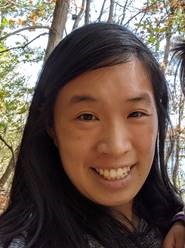Stephanie Lee joined the Department of Chemistry at New York University as an associate professor in January 2021. She received a BS in chemical engineering from MIT in 2007 and a PhD in chemical engineering and materials science from Princeton University in 2012. She was a Provost’s Postdoctoral Fellow in the Molecular Design Institute at NYU from 2012-2014 before joining Stevens Institute of Technology as an assistant professor. Her research group studies the crystal engineering of solution-processable semiconductors for emerging optoelectronic applications, including flexible displays and photovoltaics. Their strategies involve the use of solution rheology to monitor and control semiconducting polymer network formation, scaffold-directed crystallization of small molecules into vertical crystal arrays and nanoconfined crystallization to shift the thermodynamics and stability of metal-halide perovskites for high performance solar cells. Lee is a recipient of the Stevens Early Career Award for Research Excellence and a 2019 NSF CAREER awardee. She can be found on Twitter @leelab_nyu.
Read Stephanie’s Emerging Investigator article “Orienting and shaping organic semiconductor single crystals through selective nanoconfinement” and check out all of the 2021 Soft Matter Emerging Investigator articles here.
In your opinion, what are the most important questions to be asked/answered in this field of research?
There is a dichotomy in the field of emerging optoelectronics – these materials are uniquely attractive for commercial applications due to their ease of processing, but it is rapid processing from solution that hinders the formation of high-quality crystalline films required for suitable device performance. The ability to fabricate high-performance devices via scalable, continuous processes remains a critical challenge in our field.
Can you share one piece of career-related advice or wisdom with other early career scientists?
Find mentors who will advocate for you and who place your interests above their own. I wouldn’t be where I am today without the support of my mentors, especially my postdoc advisor, Prof. Mike Ward.











